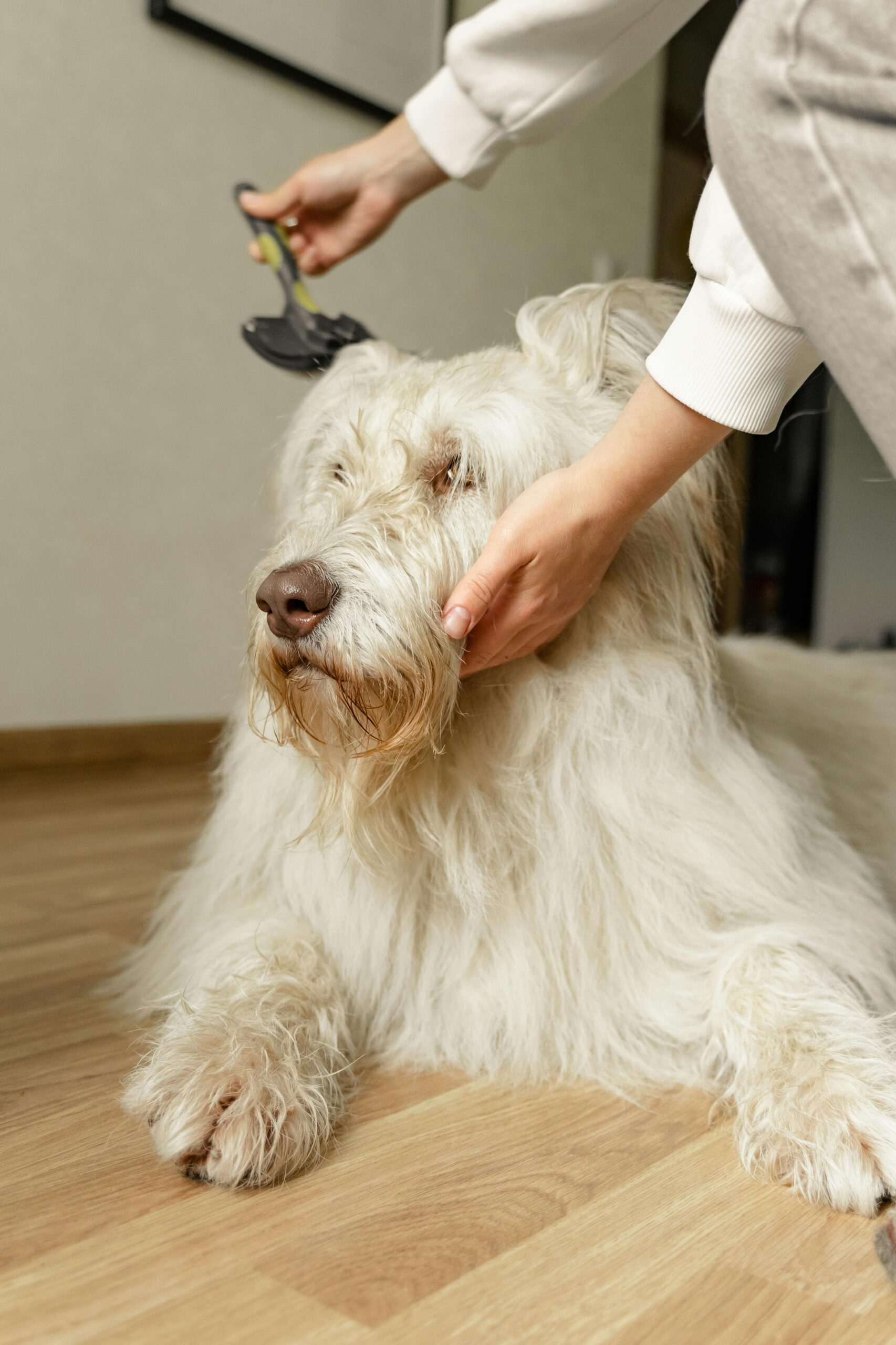When you own a dog, giving them food, love, and good walks is not everything you can do for them. Your dog requires regular grooming to maintain their shiny coat and preserve their overall hygiene. Have you ever missed your dog’s professional grooming session? Don’t worry; you can do their grooming by yourself, and in this article, we will talk about the easiest way to groom a dog so that you don’t have to take regular appointments from professional dog groomers anymore.
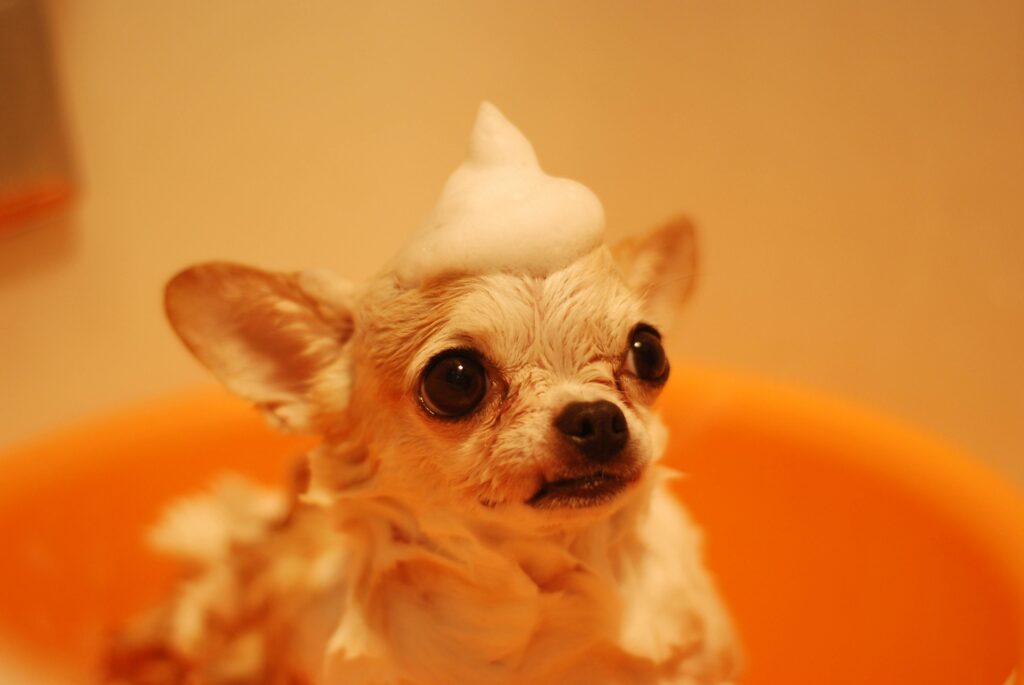
Photo by Nishizuka
Why does grooming your dog matter?
Many pet owners often search for the easiest way to groom a dog, but before learning the steps, it’s important to understand why grooming is essential for your fur baby. If you think that grooming is all about making your dog look neat and clean, then you are wrong!
It plays a vital role in their overall health and well-being, plus grooming sessions strengthen the bond between you and your pet. Brushing your dog’s hair, trimming their nails, or cleaning their ears easily spots early signs of health issues, such as lumps, hair loss, ticks, or rashes.
So, if you are looking for the easiest way to groom a dog, remember that consistent grooming not only saves time but also keeps your furry friend healthier, happier, and more active.
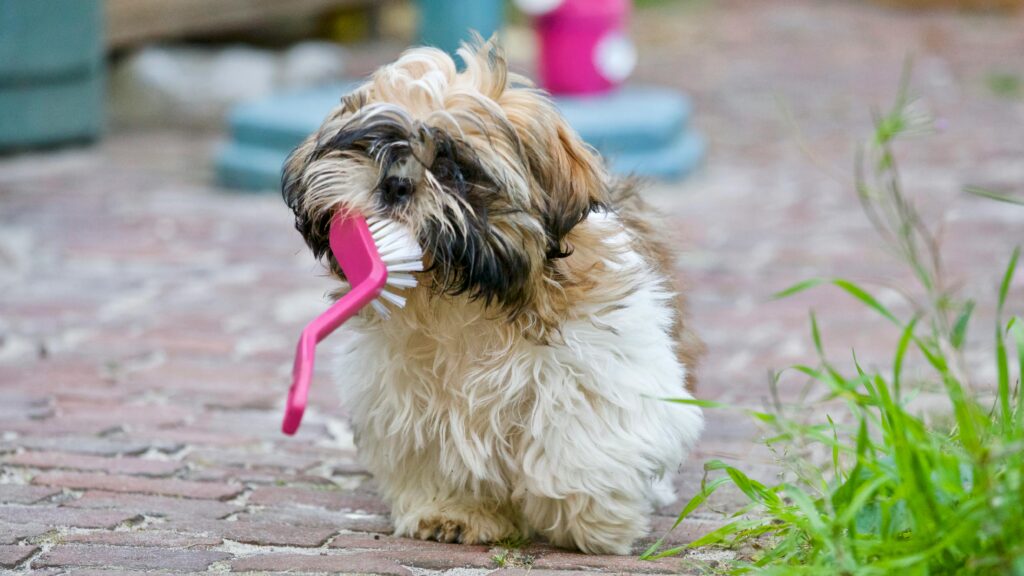
The easiest way to groom a dog at home, with a step-by-step basic grooming routine.
1. Regular Brushing
Brushing is one of the simplest yet most effective steps in dog grooming. Brushing once or twice a week removes loose hair, dirt, and tangles, plus it also helps in spreading the dog’s natural oils across the skin, maintaining their coat healthy and shiny. Regular brushing also prevents mats and keeps shedding under control.
The easiest way to groom a dog is to use the right brush according to their coat type. For long-haired breeds, a slicker brush or comb is best, while for a short-haired coat type, a bristle brush works well.
2. Periodic Hair Trimming
Periodic hair trimming is important to maintain the look, control hair loss, and regulate body temperature. Use trimming and grooming scissors or clippers that are specially designed for dogs to trim their hair. Give them a quick water wash before heading towards trimming, as it makes your job easier. Dogs are generally scared of odd sounds coming from trimmers and clippers, so always use a quieter pair and trim in the direction the fur naturally grows. For creating a relaxed environment during grooming, keep the surroundings calm by speaking gently while doing your work. Take extra care when working around sensitive areas such as the eyes and ears.
3. Teeth care
Brushing a dog’s teeth is as important as bathing and trimming because it fights periodontal disease, removes plaque and tartar, and banishes bad breath. To keep your dog’s teeth healthy, always use a soft-bristle brush and fluoride-free toothpaste specially made for dogs at least three times a week. Praise them and offer treats so they can better associate this behavior with something positive.
4. Bathing
Bath time is another important part of grooming. But it does not mean you can use any product (soap, shampoos, as they irritate their skin) to clean your dog’s fur. You need to be gentle. Only use dog-specific shampoos with lukewarm water. Keep the atmosphere calm, and brush your dog’s hair to remove all the knots and shed hair before the bath. Then slowly move towards the shampoo part.
Bathing is crucial for the dog, but it should be more than once or twice a month, and when your dog enjoys it, grooming becomes much easier for both of you.
5. Ear cleaning
Cleaning your dog’s ears is one of the easiest ways to groom a dog at home. All you need is a damp cotton ball or a vet-approved ear solution. Gently rub it in your dog’s outer skin of ear skin to remove the dirt and wax. Don’t go much deeper, as it may cause some serious infections. You can also use a soft ear cleaning tool to keep the ear tips clean and dry. Regular cleaning not only keeps your pup cozy but also helps prevent infections and keeps their ears healthy.
6. Checking for ticks and fleas
Another important part of grooming is keeping an eye out for ticks and fleas. These tiny parasites easily hide in your dog’s fur. Especially around the ears, neck, belly, and between the toes. A quick daily check after the walks or playtime outdoors can help you spot them early. Ticks and fleas don’t just make your dog itchy and uncomfortable, but they also carry some serious infections and illnesses such as Lyme disease, anaplasmosis, tick fever, etc. Regular checkups and prompt removal are the easiest ways to keep your dog healthy, happy, and parasite-free.
7. Nail Trimming
Nail trimming is often overlooked by many pet parents. Long nails can cause discomfort, affect your dog’s posture, make walking difficult, and even lead to serious joint problems if left unchecked.
Regular trimming every 3-4 weeks is important to prevent these issues. Active dogs that walk on hard surfaces may naturally wear down their nails, while indoor or less active dogs may need more frequent trims.
Always use a proper dog-specific nail clipper or grinder and trim small portions at a time to avoid cutting the quick (the sensitive part of the nail). If you are still nervous and don’t know how to trim your dog’s nails, then ask your vet. Keeping nails short and clean is a simple but essential step in your dog’s overall grooming routine.
8. Paw care
Your dog’s paw goes through a lot every day. They walk on hot pavements, rough surfaces, dirt, and sometimes even sharp objects. That’s why paw care is a crucial part of grooming. Clean paws not only keep your home dirt-free but also protect your pup from infections caused by trapped debris or bacteria.
After walks, gently wipe your dog’s paws to remove dirt and dust. For extra care, use a paw moisturizer made for dogs to keep the paw pads soft, hydrated, and crack-free. Regular paw care ensures your furry friend stays comfy, healthy, and ready for the next adventure.
9. Hair oiling
Just like humans, dogs gain extra benefits from a little nourishment for their coats. Using dog-safe hair oil can help keep their fur soft, shiny, and healthy. It not only moisturizes dry skin but also reduces itching, dandruff, and hair fall.
Massaging your dog’s coat with natural hair oil improves blood circulation, strengthens the roots, and makes brushing easier by reducing tangles. Regular oiling also adds a protective layer that keeps the fur glossy and smooth and maintains overall coat health, keeping them looking their best.
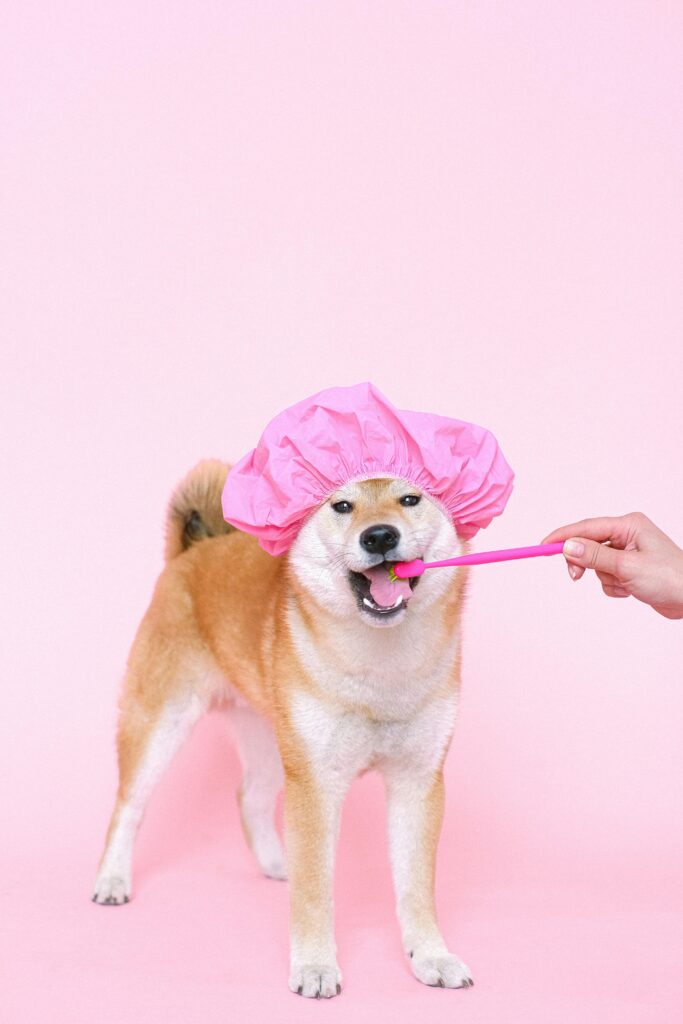
The must-have grooming tools
- Rubber-bristled brush, slicker, comb, and deshedding tool.
- Oils and shampoos specially designed for dogs.
- Cotton balls and soft, reusable cloth squares.
- Nail clippers specially for dogs.
- Microfiber towel.
- Dog-specific toothpaste and toothbrush.
- Blunt-ended (round tips) shears and small clippers with guide combs.
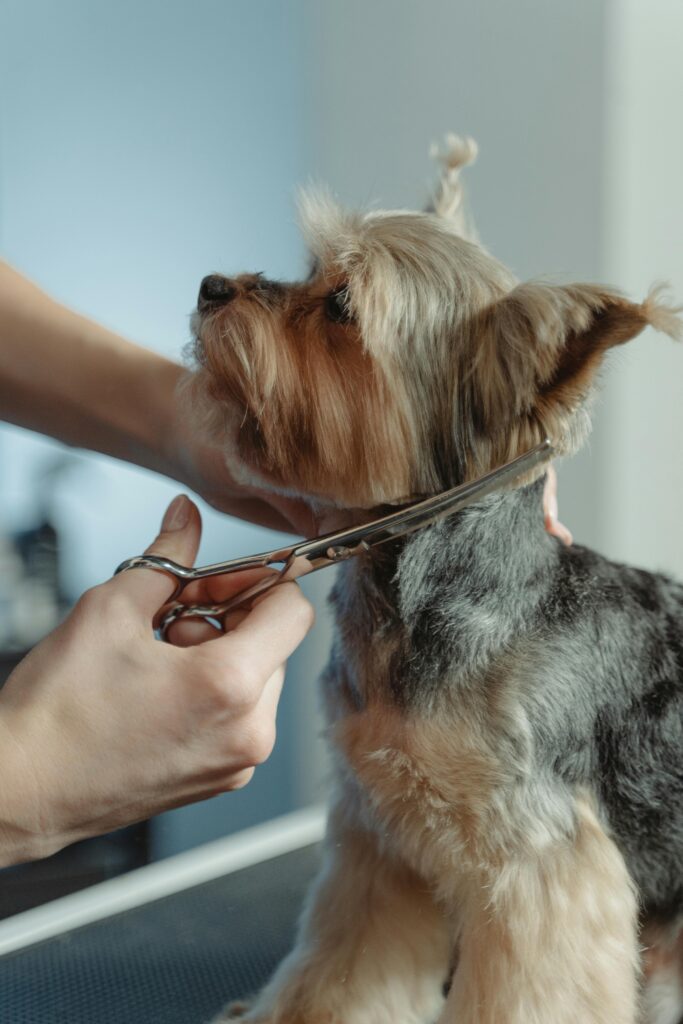
Tips to Make Dog Grooming Stress-Free
- Start slow and keep sessions short.
- Groom in a calm environment.
- Be gentle with sensitive areas.
- Use rewards and treats.
- Stay consistent.
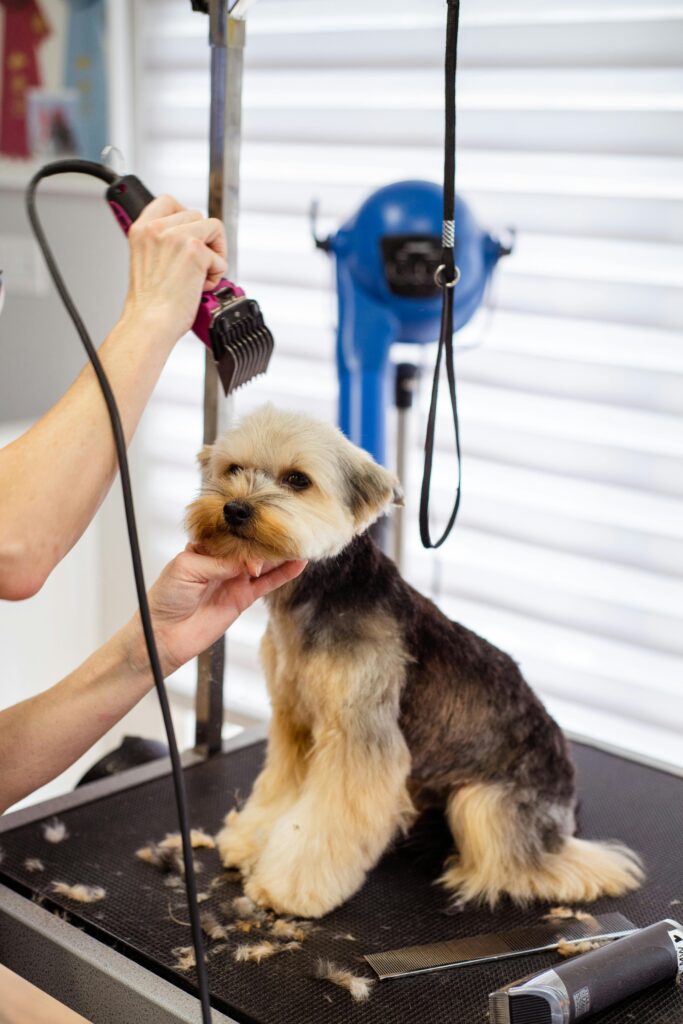
When to Seek Professional Grooming Help
- When you notice signs that your dog may need expert grooming.
- Difficult grooming tasks such as specific dog haircuts, anal gland expression, and difficult mats.
Common mistakes to avoid in dog grooming
Even if you follow the easiest way to groom a dog at home, small mistakes can cause discomfort or health issues for your furry friend. Here are common grooming mistakes to watch out for:
- Using human products instead of dog-specific products.
- Cutting nails too short.
- Skipping regular brushing.
- Ignore the ears and paws.
- Bathing too often.
- Rushing through grooming.
- Inconsistency.
- Do not check for ticks and fleas.
- Poor teeth care.
- Irregular hair trimming.
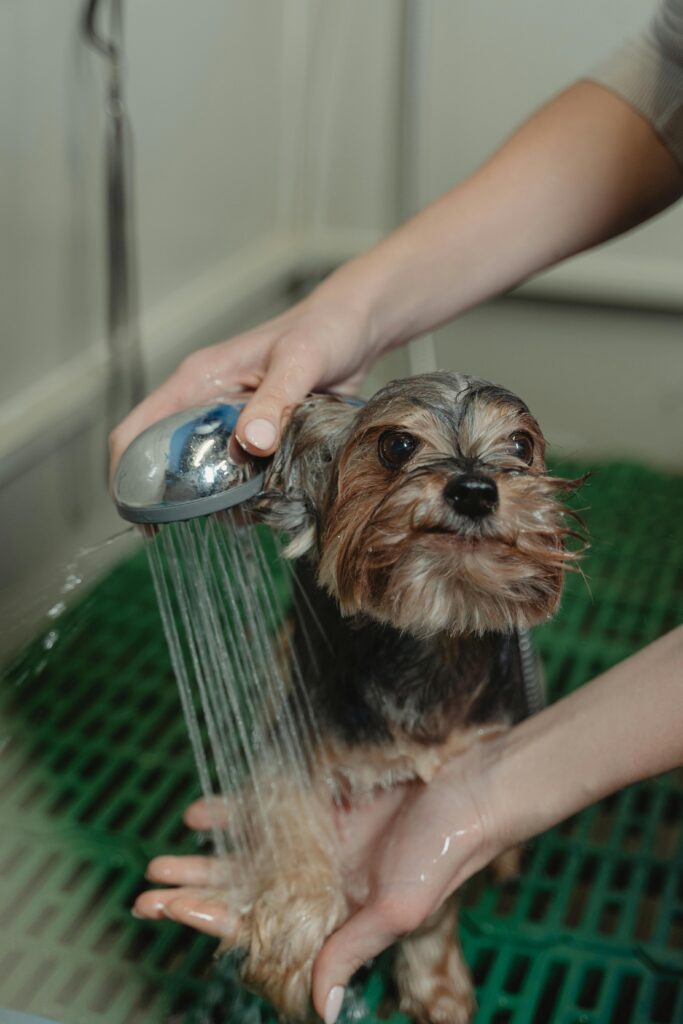
FAQ
1. What is included in grooming a dog?
Dog grooming typically includes brushing the coat, bathing with dog-specific shampoo, brushing teeth, trimming nails, cleaning ears, and caring for the paws. Some grooming routines may also involve trimming or deshedding fur, applying dog-safe products like moisturizers and hair oils, and checking for ticks and fleas. Regular grooming not only keeps your dog clean and fresh but also supports their overall health and comfort.
2. What is full vs. basic grooming for dogs?
Basic grooming usually includes brushing the coat, bathing with dog-safe shampoo, nail trimming, ear cleaning, and paw care. It’s the regular upkeep that keeps your dog clean and comfortable at home.
Full grooming, on the other hand, goes a step further. Along with the basics, it often includes hair trimming or styling, de-shedding treatments, teeth cleaning, sanitary trims, and sometimes even spa-like services, depending on the groomer. Full grooming is more detailed and ensures your dog looks neat, feels healthy, and stays hygienic for longer.
3. How do I keep my dog calm during grooming?
To keep your dog calm during grooming, start by creating a quiet, cozy space free from distractions. Introduce grooming tools slowly and let your dog sniff them before use. Keep grooming sessions short at first, then gradually extend the time as your dog gets used to the routine. Use positive reinforcement such as offering them treats, gentle praise, or breaks to make the experience enjoyable. Staying patient, gentle, and consistent is the key to reducing stress and making grooming a positive bonding time.
Final words
Grooming your dog at home doesn’t have to be sophisticated. With the right tools, a little patience, and gentle care, you can easily keep your dog clean, healthy, and happy. The easiest way to groom a dog is to make grooming a regular routine. Keep it stress-free with positive reinforcement. From brushing and bathing to nail trimming, paw care, and ear cleaning, each step plays an important role in your dog’s overall well-being. Not only does this save you from frequent trips to the groomer, but it also strengthens the bond between you and your furry friend. A little effort goes a long way in keeping your dog looking great and feeling their best.

